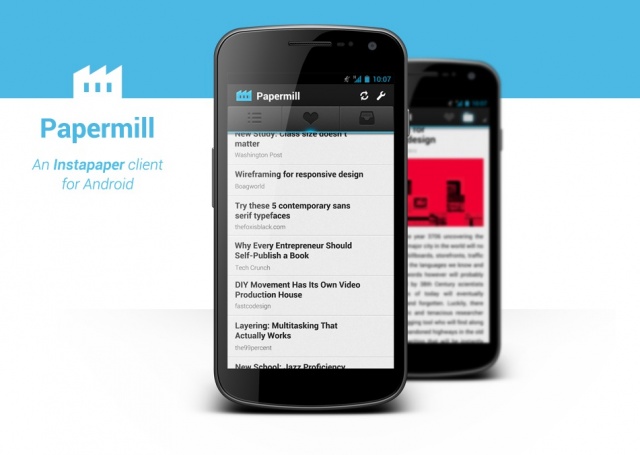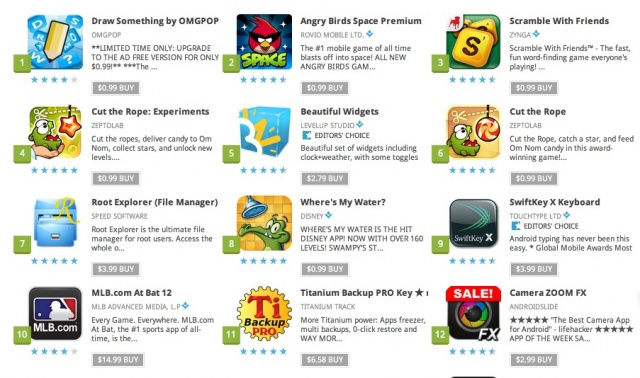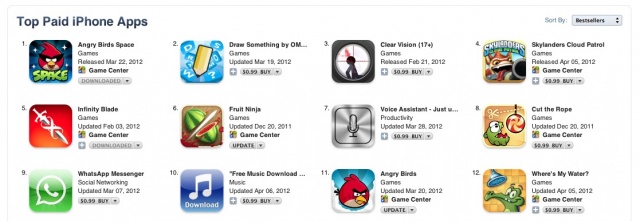Basic Economics: Are We Really Not Willing To Pay For Quality, Pricey Apps?

Are average app users cheap?
Papermill launched on Android several weeks ago. Developed by Ryan Bateman and designed with the help of Matt Legaspi, the app is a beautiful Instapaper client for Android devices. Papermill received high praise from the community and widespread media coverage when it launched, and the developer has since broken down its success based on sales. The conclusions he draws about Android users in general are particularly interesting.
Bateman says that, “Android users not being willing to pay for an apps whose focus is quality and whose price reflects this.” Is this true only for the average Android user, or should the average iPhone user be considered as well? How can one make the blanket argument that people don’t want to pay for quality apps? I think it comes down to the basic issue of supply and demand.
Media coverage and sales of Papermill have already far exceeded my expectations and I can’t envision either increasing. With this in mind, it’s easy to conclude that the the application, with its current price and need for a subscription, will never generate a profit, especially when costs like fonts still need to be incurred. If I were to create a ‘freemium’ or ad-based version, the app’s profitability would almost certainly increase but I believe that this would decrease the quality of experience that the app offers and that is rare on the Android market.

Bateman estimates to have spent 280-320 hours developing Papermill, and at the typical freelance rate of $90–120, he would be set to bill for $30,000 of work. Since he developed Papermill as a personal project on weekends and during evenings, he never expected the app to turn a profit. After the first 3 weeks of sales his app turned a $1,140 profit after selling 411 units. You’d think that a well covered, quality app like Papermill would move a whole lot of downloads on the biggest mobile device platform in the world (especially considering its the first Android app for Instapaper see update), so less than 500 units sold is kind of surprising (although Bateman reiterates that sales have exceeded his expectations). It will take Papermill 5 years to make a profit at the current turnover rate.
Nearly 50% of Papermill users are running Ice Cream Sandwich, according to Bateman’s analytics. Less than 5% of all Android users are running the latest Android 4.0, so Bateman is obviously catering to an early-adopting audience, and the app is for people who are willing to drop $4 on an Instapaper client — not to mention the small monthly subscription required to access the Instapaper API. That says a lot about Papermill’s user base.
Bateman takes the stance that an ad-supported version of his app would make it more successful, but he doesn’t want to detract from the design work and thoughtfulness he put into Papermill. I’m sure it wouldn’t be a stretch to argue for Bateman that a ‘freemium’ Papermill app would be like throwing dirt on a painting. Developers who take pride in their quality apps don’t want them cluttered and dirtied with ads.
Is it true that Android users don’t want to pay for quality apps that come with a price tag to match? Take a look at the top paid apps on Google Play:

And now the

Interestingly enough, every iPhone app in the top 10 paid chart is priced at $0.99. The Android top 10 consists of one $2.79 app, three apps priced at $3.99, and one app priced at $14.99. If we are comparing the top apps on both platforms, it looks like Android users actually pay more for apps.
Now of course we have to consider that the size of Apple’s App Store still dwarfs Google Play. However, I think it’s interesting that Android has higher priced apps in its top charts. For the most part, the iPhone’s top 100 paid apps stay between $1-$2.
Most people don’t want to pay a lot of money for apps. That isn’t going to change. Apps that serve niche purposes — I would include something like an Instapaper client for Android — will always be able to charge more. There are less users who will want to buy such an app, but they will be willing to pay a premium because there are not many (if any) other solutions. It’s basic supply and demand. The real killer is when you can make an app for a market with little supply but a whole lot of demand.
Update: Papermill is actually not the first Instapaper client for Android. There are multiple others, including titles like Read Later for Instapaper and Readingo.


